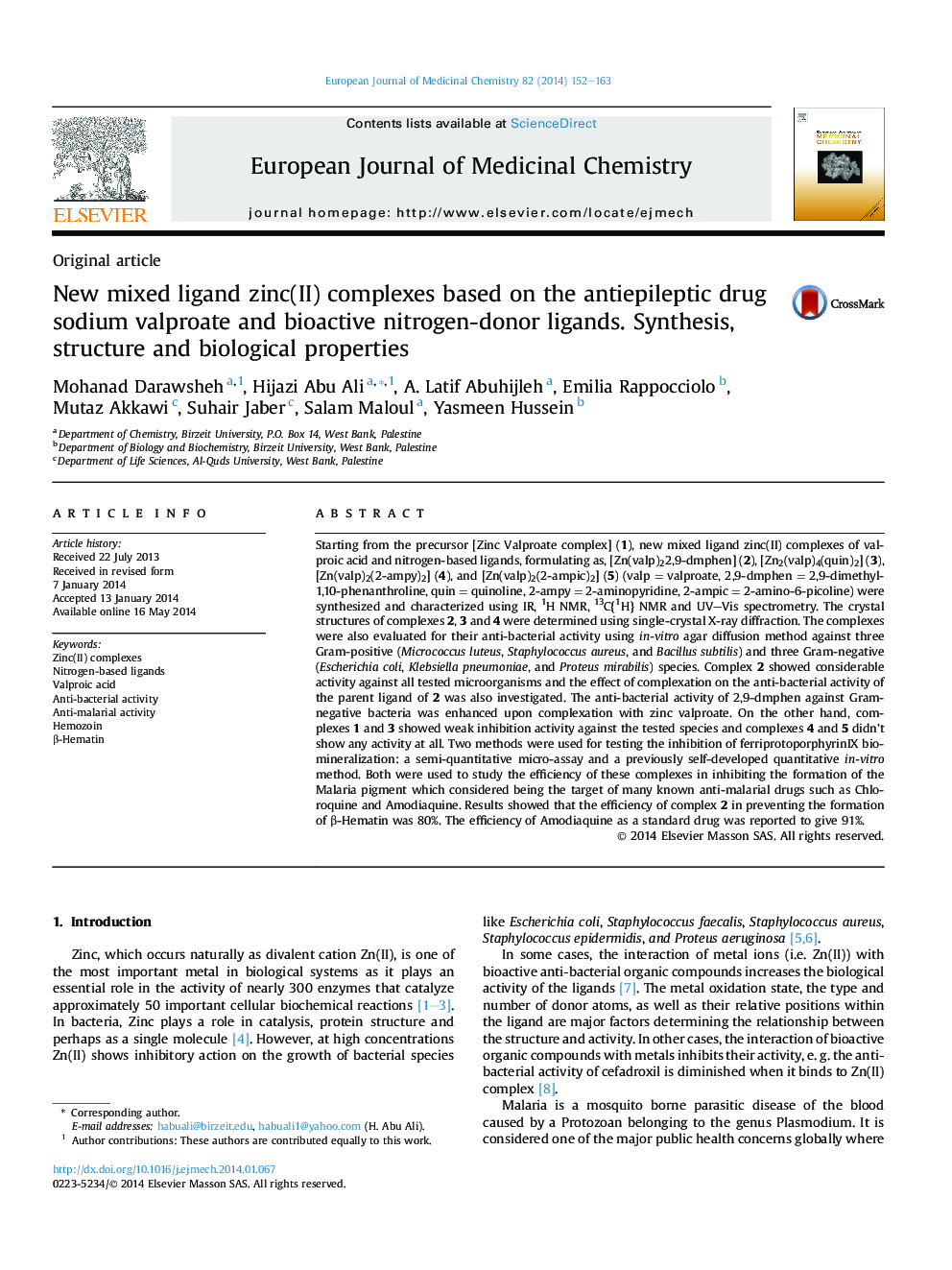| کد مقاله | کد نشریه | سال انتشار | مقاله انگلیسی | نسخه تمام متن |
|---|---|---|---|---|
| 1395722 | 1501134 | 2014 | 12 صفحه PDF | دانلود رایگان |

• New mixed ligand zinc(II) complexes of valproic acid and nitrogen-based ligands were synthesized.
• The complexes were characterized using various spectrometric techniques.
• In-vitro anti-bacterial activity against several bacterial species was studied.
• In-vitro anti-malarial activity of complex 2 against the formation of β-Hematin was determined.
Starting from the precursor [Zinc Valproate complex] (1), new mixed ligand zinc(II) complexes of valproic acid and nitrogen-based ligands, formulating as, [Zn(valp)22,9-dmphen] (2), [Zn2(valp)4(quin)2] (3), [Zn(valp)2(2-ampy)2] (4), and [Zn(valp)2(2-ampic)2] (5) (valp = valproate, 2,9-dmphen = 2,9-dimethyl-1,10-phenanthroline, quin = quinoline, 2-ampy = 2-aminopyridine, 2-ampic = 2-amino-6-picoline) were synthesized and characterized using IR, 1H NMR, 13C{1H} NMR and UV–Vis spectrometry. The crystal structures of complexes 2, 3 and 4 were determined using single-crystal X-ray diffraction. The complexes were also evaluated for their anti-bacterial activity using in-vitro agar diffusion method against three Gram-positive (Micrococcus luteus, Staphylococcus aureus, and Bacillus subtilis) and three Gram-negative (Escherichia coli, Klebsiella pneumoniae, and Proteus mirabilis) species. Complex 2 showed considerable activity against all tested microorganisms and the effect of complexation on the anti-bacterial activity of the parent ligand of 2 was also investigated. The anti-bacterial activity of 2,9-dmphen against Gram-negative bacteria was enhanced upon complexation with zinc valproate. On the other hand, complexes 1 and 3 showed weak inhibition activity against the tested species and complexes 4 and 5 didn’t show any activity at all. Two methods were used for testing the inhibition of ferriprotoporphyrinIX bio-mineralization: a semi-quantitative micro-assay and a previously self-developed quantitative in-vitro method. Both were used to study the efficiency of these complexes in inhibiting the formation of the Malaria pigment which considered being the target of many known anti-malarial drugs such as Chloroquine and Amodiaquine. Results showed that the efficiency of complex 2 in preventing the formation of β-Hematin was 80%. The efficiency of Amodiaquine as a standard drug was reported to give 91%.
Figure optionsDownload as PowerPoint slide
Journal: European Journal of Medicinal Chemistry - Volume 82, 23 July 2014, Pages 152–163